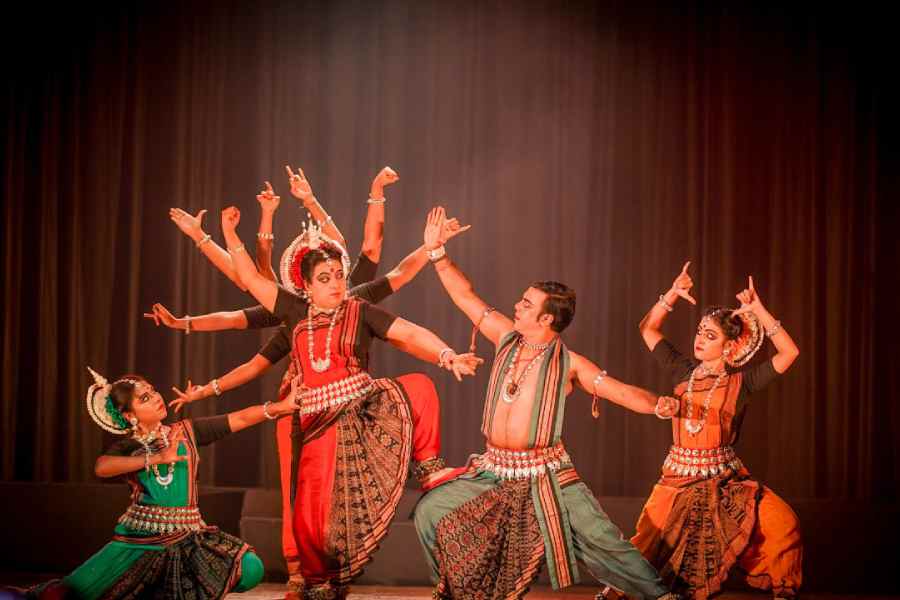Shakti upasana — the invocation of divine feminine energy — is intrinsic to our cultural-religious ethos. The creative potential of Odissi to tap into this cosmic dynamism is evident in the sundry compositions, stylistic elements and foundational tenets of the form that incorporates the iconography of the goddess. Banhishikha, recently presented by Dona Ganguly and the students of Diksha Manjari as a segment of the Kavya Nritya Chitra festival held at the Science City Mini Auditorium, manifested the cult of Chandi, an incarnation of Durga, in their adaptation of “Mahisasura Mardini”.
Basing the production on rohstoff that has an enduring cultural value in eastern and northern India, Banhishikha combined devotional energy, mythology and storytelling to espouse a familiar narrative: the triumph of good over evil. Aided by a track list reverberating the sharodiya spirit, the first recital, “Ya Chandi”, saw a group of 10 dancers initiate the customary vandana piece through a subtle mix of lasya and roudra bhav — a duality inherent in the mystical aura. The solo performance of “Shinghastha shashi shikhara” by a male dancer deftly employed classical postures to delineate divine beauty. The red stage lighting then gradually eased into mellow blue as “Bajlo tomar alor benu” and “Jago Durga” were staged by an ensemble of senior dancers whose synchronised movements bore the stamp of Ganguly’s dexterous choreography: their dancing with fly whisks — a sandhi puja prop — heightened the spiritual fervour.
The core element of the performance was the annihilation of the demon. Midway through the performance of “Jata juta yuta”, Ganguly appeared on stage. Donning an evocative red-and-black traditional Odissi attire and embellishments, she then transformed into Mahisasurmardini. Making use of the tapestry of emotions at her disposal, shifting between ferocity and heavenly poise, she etched out the contours of omnipotence. Notwithstanding the mechanical strategy of assembling a line of dancers to form the goddess’s 10 arms and weapons — Mahisasura could also have been more imaginative — Ganguly shone in the depiction of her craft and emotional finesse.










